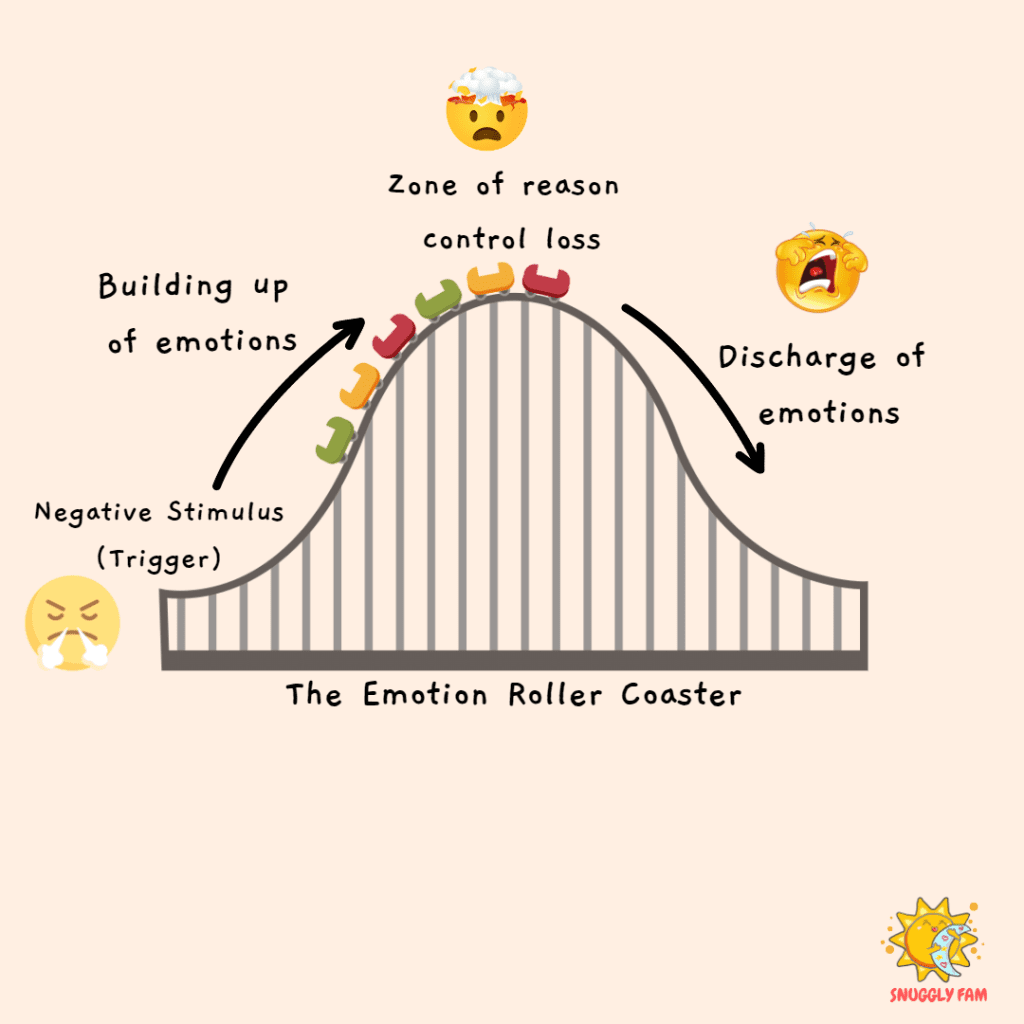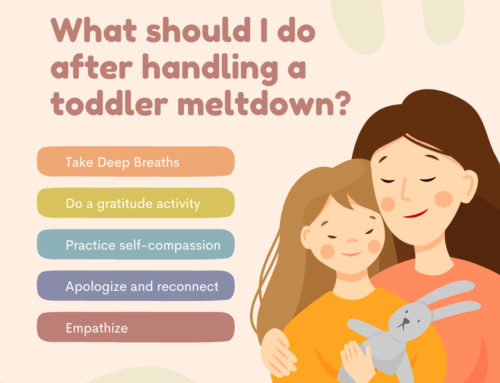If you’re a parent like myself with children under 5, I guess multiple meltdowns in a day is no stranger to you. Meltdowns can be triggered by anything and everything, and once it starts, there’s no stopping it. No matter how you try your very best to reason with the child, they just don’t listen. Voices are raised, tensions are high. Meltdowns can be physically and emotionally draining and when you think that you’re done with it, something can trigger the next melt-down when you haven’t recovered from the previous one.
If you’re nodding your head in agreement as you read this, then when will this torturous stage end? A person’s brain is matured at around 25 years old. So does this mean I have to accept my child’s behaviour until 25 years old? No, but as parents, we can manage ourselves which in turn helps manages our child’s behaviour.
Before we venture into techniques to help the child, first we need to understand how the brain works. When we have that knowledge, we see how meltdowns can be better handled. Here are 3 facts about understanding meltdowns.
- How the brain works
First, let’s understand how our brain works. According to neuroscientist, Paul Maclean, the human brain can be divided into 3 regions, the Reptilian Brain, Limbic system and Neocortex. The Reptilian Brain is important for humans to carry out day-to-day functions and the fight-or-flight response. The Limbic system is responsible for our emotions and the Neocortex for our rational thinking.
When a meltdown happens, the Limbic system gets activated, and all parts of the brains cannot connect with each other. A good analogy would be Dr Daniel Siegel’s hand model of the brain. Watch it here. Which is why when a melt-down happens and a child is crying uncontrollably, no amount of reasoning would work.
2. The emotion roller coaster
Which brings me to my next point. The emotional roller coaster. Each time my child goes into a meltdown, I visualise her emotions on a roller coaster. The perception of this stimulus, it can be a situation of not wanting to leave the playground, can be perceived or interpreted by her as negative, triggers the charge of emotions, causing her emotions to roller coaster upwards.
Hormones are released, the body becomes tense and the emotion guides my child towards a reaction adapted to the environment – resulting in built up of negative emotions.
At the peak of the roller coaster ride when emotions run high, no amount of reasoning would work. This is the zone of reason control loss.
Emotions are released or discharged through the form of crying for my child. These emotions if not released, it can be manifested somewhere else. The discharge is the phase of expression which allows the body to return to its basic equilibrium.

3. Crying as a coping mechanism
Crying. Have you noticed when your child wants something and can’t get it or is about to get into a meltdown, their first response would be to cry, throw something or hit? When the body senses a negative stimulus or trigger in the environment, it has the innate ability to cope. Coping can come in the form of emotions. In the case for toddlers, it is crying. It can translate into what we feel as anger, sadness or frustration. Some people cope with these emotions through crying. Yes, crying. Crying can be frowned upon or seen as a sign of weakness in different cultures. But if we view crying from a different perspective, crying is a natural response to a vary of emotions to help us release stress and emotional pain.
This is where we come in as parents. Being understanding and empathetic to the child helps them understand their boundaries when parents say no. In moments when uncontrollable crying happens, I take a step back and let my child cry it all out. The sobbing turns into crying, then morphs into screams and hits. When this happens, I make sure she is in a safe space and cry it all out. Sometimes she will ask for hugs to calm down. Other times, she may continue crying until she is done. My ears do hurt, and so is the fire inside me trying to ask her to breathe and calm down. But when I understand that she is crying to regulate her emotions, and to release the stress from me (the stimulus) when I said no, I take a step back to calm myself down and just be present for her.
Whenever a meltdown happens, I remember that my child is going through a rough time and needs my help regulating her limbic system to the neocortex. Emotions can be hard for them to understand. When we guide them from a young age to regulate their emotions, these techniques can be brought into their adulthood to help them build better emotional intelligence.
In my next article, I will be writing about the techniques I use to help my child manage her meltdowns.
Till next time,
Marilynn



